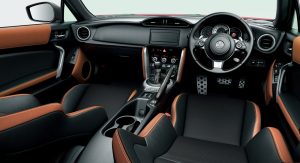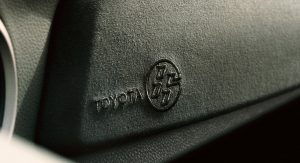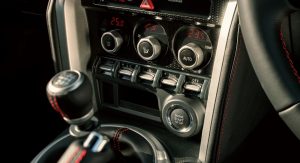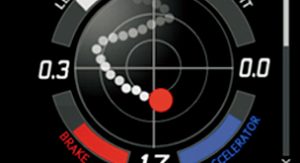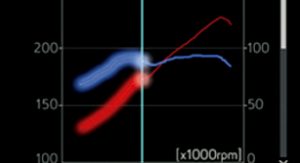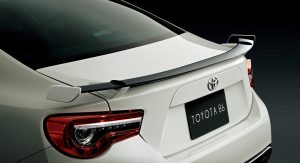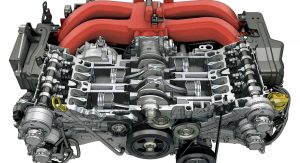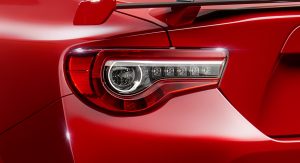The company announced it will launch the redesigned Toyota 86 in Japan on August 1, bringing significant enhancements in handling and aerodynamics.
Toyota has updated the looks of their compact rear-drive coupe, improving at the same time the aerodynamic performance with a more sculpted and lower nose that features a wider grille and a rear spoiler that adds downforce.
The rear bumper now features a wider diffuser section with the redesigned taillights utilizing LEDs in a horizontal direction to give the impression of a wider stance.
While numbers suggest that the 2.0-litre flat-four engine has gained just 5hp, now offering 205hp (207PS) and 156 lb-ft (212Nm) of torque, Toyota says that maximum torque is now generated at a wider range of engine revs (6400 to 6800rpm) while the torque in lower revs has also been improved thanks to changes made to the intake and exhaust manifolds.
It’s important to notice that the power gains are only applied to the manual six-speed version as the automatic still offers 197hp and 151lb ft (205Nm) of torque between 6400 and 6600rpm.
The chassis is now more rigid, thanks to an increase in the number of spot welding points on the rear pillars, allowing the suspension to perform better. Toyota also added the option of Sachs absorbers for those looking to extract the best out of their new 86 straight out from the factory gates.
All models now come with LED headlamps as standard, with GT Limited and GT models also getting LED front fog-lamps. A set of new gun-metallic finished 17-inch alloys with machine-cut highlights are also standard on GT Limited and GT models.
This is also the first time we get to see the changes made inside the cabin. The steering wheel is now smaller, with a diameter of 362mm, making it the smallest ever used in a Toyota. The tachometer was modified so that the very top of it reads 7k, where the engine is generating its maximum output while a 4.2-inch TFT color display next to it provides useful information to the driver, including real-time G-forces, power/torque curves, and a stopwatch.
Toyota has upped the quality of the materials used inside too, adding an optional suede-like trim for the instrument panel and door cards. New carbon-like inserts on the doors and heater controls and Alcantara seats are also on offer.
The base G models start at 2,623,320 yen for Japan (around $25,800 in current exchange rates) while the more expensive GT version starts at 2,981,880 yen ($29,300).



![Revamped Toyota 86 Getting Ready For Japan Launch [39 Pics]](https://www.carscoops.com/wp-content/uploads/2023/06/ForCarscoops-1024x683.jpg)
![Revamped Toyota 86 Getting Ready For Japan Launch [39 Pics]](https://www.carscoops.com/wp-content/uploads/2016/07/open-44.jpg)









